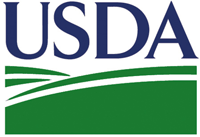The latest farm financial forecast is brighter and even the dairy sector is expected to be a little higher this year, despite increased feed costs.
 According to the USDA report, net farm income is forecast to be $94.7 billion in 2011, up $15.7 billion (19.8 percent) from the 2010 forecast. The 2011 forecast is the second highest inflation-adjusted value for net farm income recorded in the past 35 years. The top five earnings years for the past three decades have occurred since 2004, attesting to the profitability of farming this decade. Net cash income, at $98.6 billion, is forecast up $7.3 billion (8%) from 2010, and $26.8 billion above its 10-year average (2000-2009) of $71.8 billion.
According to the USDA report, net farm income is forecast to be $94.7 billion in 2011, up $15.7 billion (19.8 percent) from the 2010 forecast. The 2011 forecast is the second highest inflation-adjusted value for net farm income recorded in the past 35 years. The top five earnings years for the past three decades have occurred since 2004, attesting to the profitability of farming this decade. Net cash income, at $98.6 billion, is forecast up $7.3 billion (8%) from 2010, and $26.8 billion above its 10-year average (2000-2009) of $71.8 billion.
Dairy receipts are expected to increase by 2.8 percent in 2011 as milk prices received by farmers increase slightly by $0.20/cwt. Dairy cow numbers are expected to increase slightly in 2011, as is the milk-per-cow ratio. U.S. milk exports are projected to be lower in 2011 due to competition from Australia and New Zealand, despite strong demand from Asian and South American countries.
“Today’s report predicting strong financial performance in the agriculture sector for 2011 is good news for producers and indicates that economic improvement is underway in much of rural America. Potential record or near record prices for commodities like corn, wheat, soybeans and cotton reflects the fact that our trading partners continue a strong demand for food and fiber produced by America’s farmers,” said Agriculture Secretary Tom Vilsack of the report. “While overall the report is positive, especially for producers of grains and fiber, it is a concern that farmers continue to face an increase in expenses for key inputs, including feed, fertilizer and fuel. Additionally, after a strong recovery in 2010, the report projects a revenue decline for livestock farm businesses in 2011 and continued income and loan repayment concerns for dairy farmers. Higher feed costs are a primary factor.”
The value of crop production is expected to be up over 30 percent this year, while the value of livestock production is projected to be less than five percent higher, with dairy products up less than one percent.
